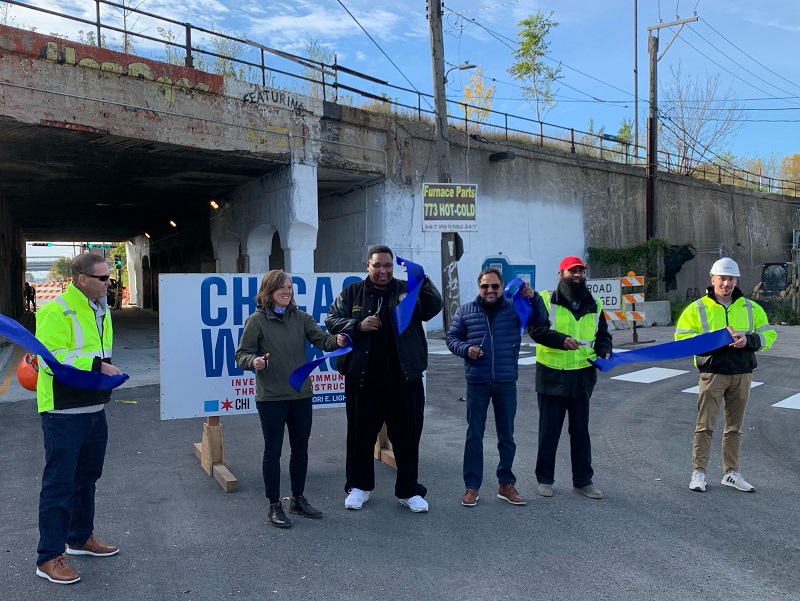CDOT Joins Aldermen Ervin at Ribbon Cutting for Western Avenue Viaduct Rehabilitation Project at 18th Street
Western Avenue Project is Part of CDOT’s Underpass Rehabilitation Program Funded by Mayor Lightfoot’s Chicago Works Infrastructure Investment and Jobs Plan
Mike Claffey 312.744.0707 | Michael.Claffey@cityofchicago.org
Susan Hofer 312.742.2006 | Susan.Hofer@cityofchicago.org

CHICAGO – Chicago Department of Transportation (CDOT) Commissioner Gia Biagi joined 28th Ward Alderman Jason Ervin today at the ribbon cutting for the newly rehabilitated viaduct on Western Avenue at 18th Street that was funded by Mayor Lori E. Lightfoot’s Chicago Works infrastructure and jobs plan. The project provided a new roadway, sidewalks and drainage for the heavily used viaduct in Pilsen that carries about 25,000 vehicles per day.
“Our railroad viaducts are a critical part of the infrastructure that makes Chicago a transportation hub for the nation,” said Commissioner Biagi. “Thanks to Mayor Lightfoot’s Chicago Works capital program, we are making major investments to improve the condition of our viaducts to keep people and goods moving throughout the region – and to help our neighborhoods thrive and stay connected.”
“The Western Avenue viaduct at 18th Street is a vital link in our transportation network,” said Alderman Ervin. “We would like to express our thanks to Mayor Lightfoot and the team at CDOT for prioritizing this investment and providing the greatly improved pavement and sidewalks at this viaduct.”
The viaduct carries railroad tracks for the BNSF Railway and includes the entrance to the Western Avenue stop for Metra’s BNSF line.
The Mayor’s Chicago Works capital plan includes $12.3 million for viaduct rehabilitation projects in 2021 and 2022.
The Mayor’s five-year Chicago Works Capital Plan was approved by the City Council in November 2020 and will provide an additional $3.7 billion to improve quality of life for all Chicago residents by investing in sustainable transportation infrastructure and City facilities in all 77 communities. The plan relies on data and an equity lens to guide investments that are expected to put thousands of Chicagoans back to work helping the City recover from the Covid-19 Pandemic and addressing a decades-long backlog of infrastructure needs.
